In a world of nanotechnology and rovers on Mars, it’s reassuring to imagine that in the village of Kilcar, Co Donegal, there’s a mill still creating fabric on wooden looms that look like they’re from the Medieval Age. All day long, a few master weavers sit on hard loom benches sending a shuttle back and forth, carrying the weft yarn through the warp, to slowly build up a piece of cloth, one thread at a time.
This is Studio Donegal, which for decades now has been quietly continuing the craft of hand weaving that was first introduced to the area in the 1700s and later "modernised" to its current form in the late 19th century by the Congested District Board, with the aim of alleviating poverty along the northwestern seaboard.
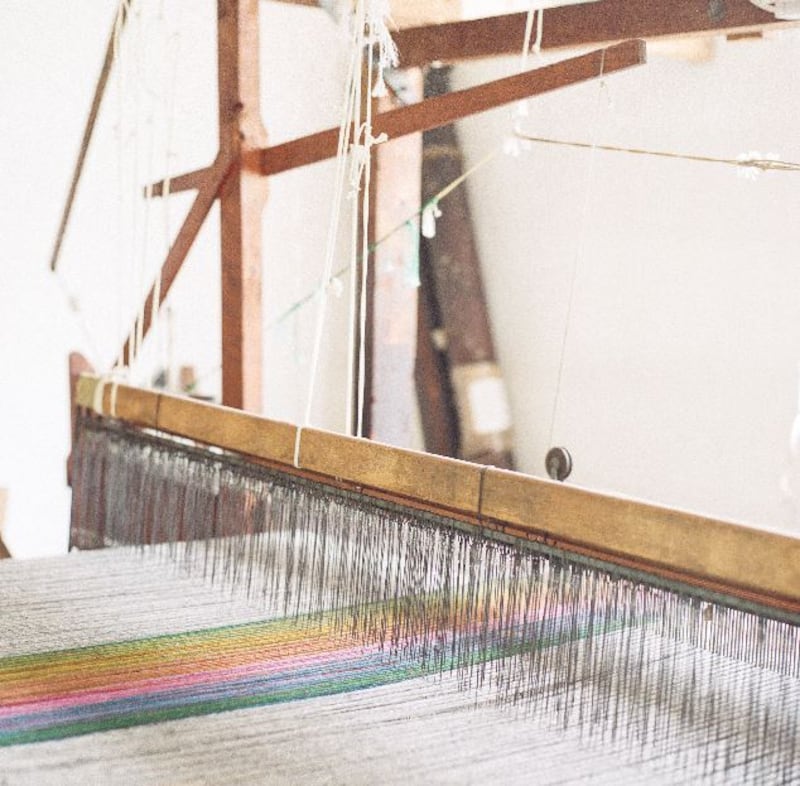
"Some people think we're mad to continue producing textiles in this old way, using out-dated equipment," says Tristan Donaghy, the second generation of his family to continue the tradition in a tiny village not far from the Slieve League cliffs. "But people are also beginning to realise the importance of maintaining indigenous craft."
It’s comforting to know that on any moment of any day you can enter the humble, but finely proportioned, 1930s building and head upstairs into a long barn-like room in which weavers sit at convoluted timber contraptions known as drop box wooden looms, each of which has been adapted to their precise specifications and body size, practising a craft that is as old as time. Halfway up the stairs the fabric storeroom contains vast rolls of handwoven tweed in the most beautiful tones that were warped and hand woven in this very building. These in turn will be made into clothing in the sewing room here or sold as bolts of fabric to designers and upholsters throughout the world.
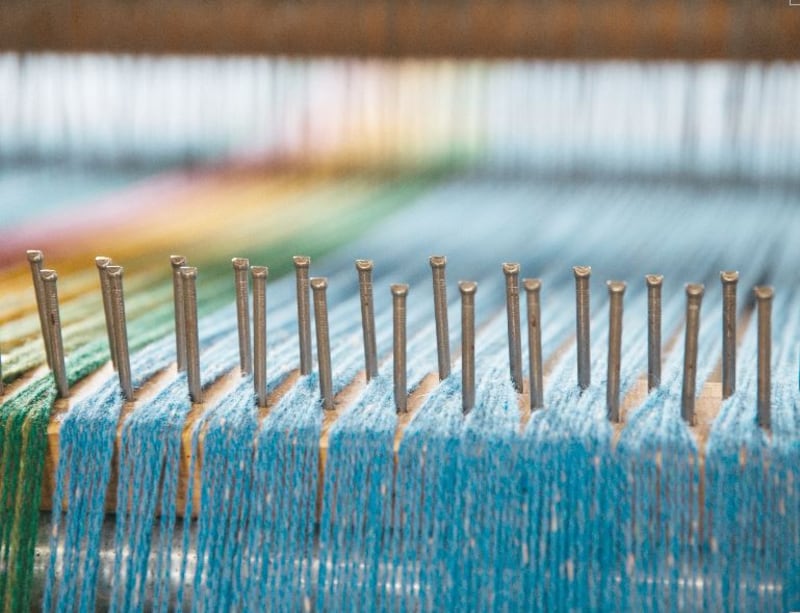
For Donaghy, the idea of losing what he terms "indigenous craft" is equivalent to jettisoning part of our history and heritage. Keeping the looms working helps to maintain the traditions of carding, dying and spinning yarn, which also still continue in Kilcar under the stewardship of Donegal Yarns, the company that supplies most of Donaghy's yarn.
Since 1988 they have been producing the handmade tweed
“We work closely with them to create our bespoke range of yarn which gives us our unique palette of colour. Some yarns we spin ourselves, using Irish wool. We produce a range of throws with rainbows. To get the special effect of the rainbow, we hand feed a card and spin these special effect yarns on a Victorian spinning mule.”

The mill in which Studio Donegal now operates was first established in the 1930s as Round Tower Tweeds, which built upon Donegal's illustrious reputation as the home of the finest hand-knotted carpets that graced the likes of Buckingham Palace and the White House. For generations, local farmers in the area had supplemented their income by hand weaving tweed from rough woollen yarn, which had been spun at home by women using the fleece of the indigenous blackface sheep.
But, gradually, mechanisation and globalisation put pressure on traditional crafts and by the 1970s Round Tower Tweeds had converted to power looms and automated weaving. They were rebranded as Connemara Fabrics, and built a modern mill to compete with cheaper imports from an open market. Yet, it proved hard to compete with mills that had outsourced their manufacturing to parts of the world where labour was cheap.
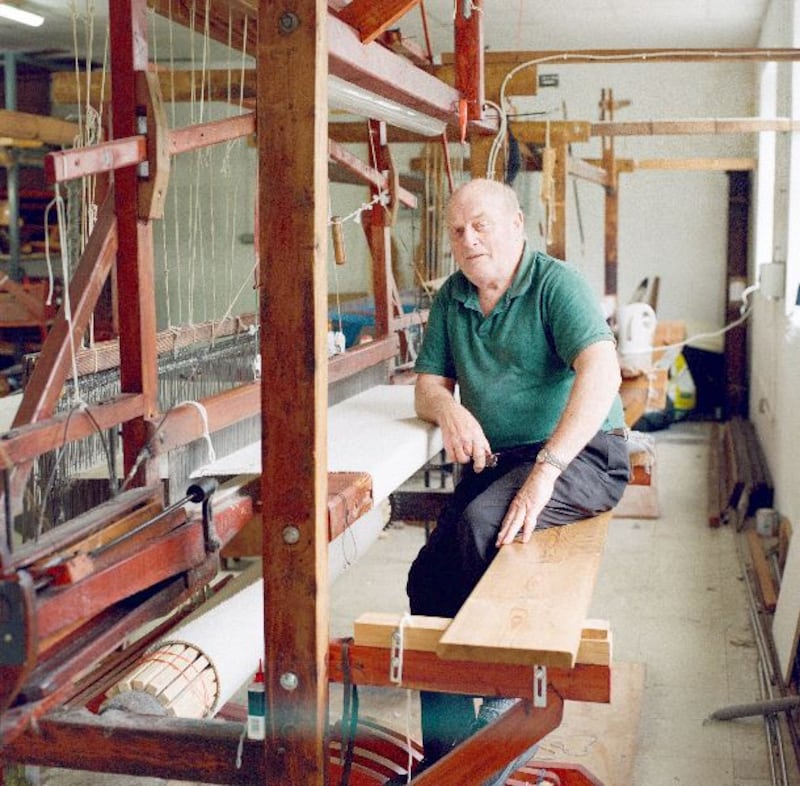
In the end Connemara Fabrics decided to reintroduce some hand weaving and Donaghy's father, Kevin, was engaged to manage and develop the new venture, called Studio Donegal in 1979. They bought up vintage looms and re-established the old mill that was by then almost derelict. And they coaxed one of the most experienced local weavers, Michael Cannon, out of retirement to train a new generation of young weavers.
Within a short amount of time they were once again producing the finest quality hand-woven cloth, but it was still hard to compete against the monstrous producers of machine tweed. By 1987 the company realised they would have to shut down the hand weaving section. It looked like the end of the hand weaving tradition in this part of Donegal, until at the last minute, Kevin Donaghy and his wife Wendy decided that they weren't willing to oversee its demise.
'It's the human element of handwoven cloth that I most want to communicate to people'
They made a rash decision to buy the hand looms from the company and take a lease on the old mill buildings. That was in 1988, and ever since they have been producing the handmade tweed, as well as spinning some of their own yarn on an old woollen mule with 100 spindles. It has meant scouring the world for equipment and replacement parts, as none of these devices are made today.
The breaking/blending machine came from Macroom, Co Cork, and the carding machine from Yorkshire. The mule, which spins the yarn, came from a defunct mill in Donegal, and they acquired their warping machine from their predecessor, Connemara Fabrics, in the 1980s.

“It’s not easy, of course. These things never are,” says Donaghy. “The challenge is to produce a standard product from a constantly varying raw material. You are having to adjust things the whole time to take account of the weather, the wool, humidity, the loom. So many factors can change how the wool reacts. It’s never just a case of switching on a machine and having something come out the other end.”
Fortunately, discerning buyers worldwide are now more aware of authenticity and will pay a premium for a handmade, traditional Irish product. For decades Donaghy was repeatedly advised that in a globalised market buyers would always source from the cheapest supplier and that his only future was modernisation and automation. But he held firm to the hope that there would always be customers willing to seek out an authentic, quality product, with a unique story and a rich tradition. And his instinct has proven right, with the business growing steadily every year, until lockdown.

“It’s the human element of handwoven cloth that I most want to communicate to people,” says Donaghy. “You see the weaver’s personal signature in the cloth. If you were weaving black on white and you let someone else on the loom and they are beating up slightly differently, say, 10 pics per inch rather than 9.5 pics, suddenly your cloth will start turning slightly darker grey. It’s like an artist taking over a canvas from someone else.”
The future of this business depends on us as consumers being prepared to pay a reasonable price
He points out how each loom becomes an extension of the weaver. It is tuned specifically to them, so there can be no such thing as shift work. Each weaver is allotted a specific order to complete from start to finish, to ensure a standard beat through the cloth and avoid ending up with bales of varying shades.
“There is plenty of machinery that would simplify this work, but they all require heavy investment and you end up working for the machine, rather than the machine working for you. I could have one employee looking after four modern, high-production looms, but that would entail shift work to ensure the loom worked hard enough to pay for itself. We managed to avoid all that stress and risk by following the old ways. The looms are hard to find now, but if necessary we could make one from scratch. As it is, they’ve paid for themselves many times over, and now they just tip away.”

Donaghy is proud of how using the old skills allows for a more compassionate form of business, in which the work can be structured around a person’s life, rather than being enslaved to the time schedule imposed by a machine. There are currently three weavers working full time at the mill, two are local men in their 60s who are descendants of weavers and who are keen to pass on the tradition to the next generation. The third is in his 30s and was trained by his uncle and inspired by the weaving of his grandfather.
The challenge is finding young weavers with the correct skillset and frame of mind to dedicate themselves to the craft. An initial hurdle is selecting those who can see beyond the romance of it to the reality. Donaghy firmly believes there is a future in hand weaving in Donegal and as a result is committed to offering apprenticeships, though he stresses that training a weaver is a slow, costly and time-consuming business.
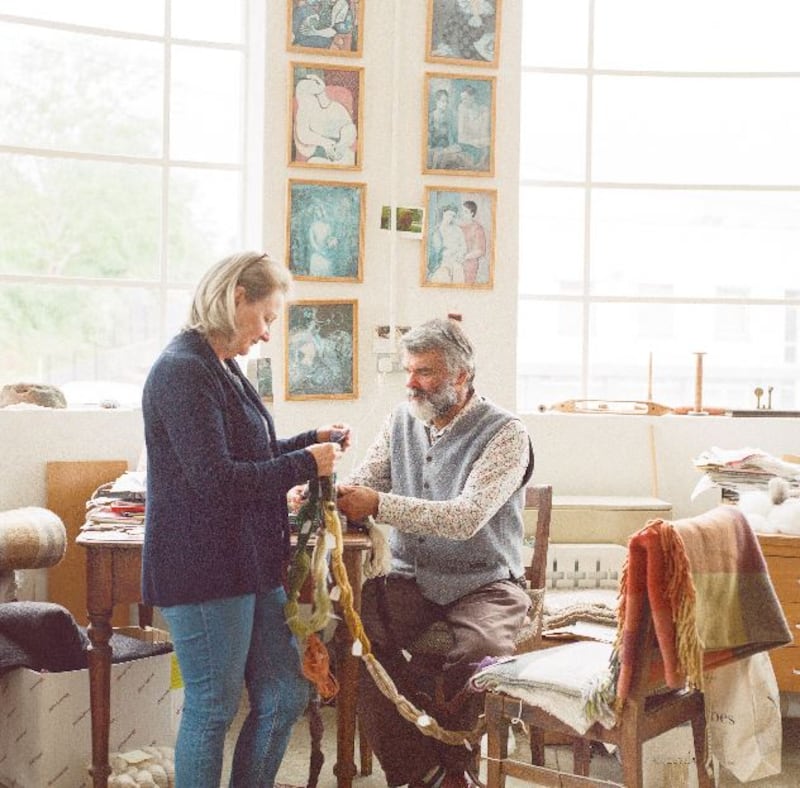
There are currently two young men whose grandfathers were great weavers in the area and they are now beginning to contemplate a potential future for themselves in this ancient craft. If they show the right commitment and aptitude, Studio Donegal will train them as it has trained many people in the past.
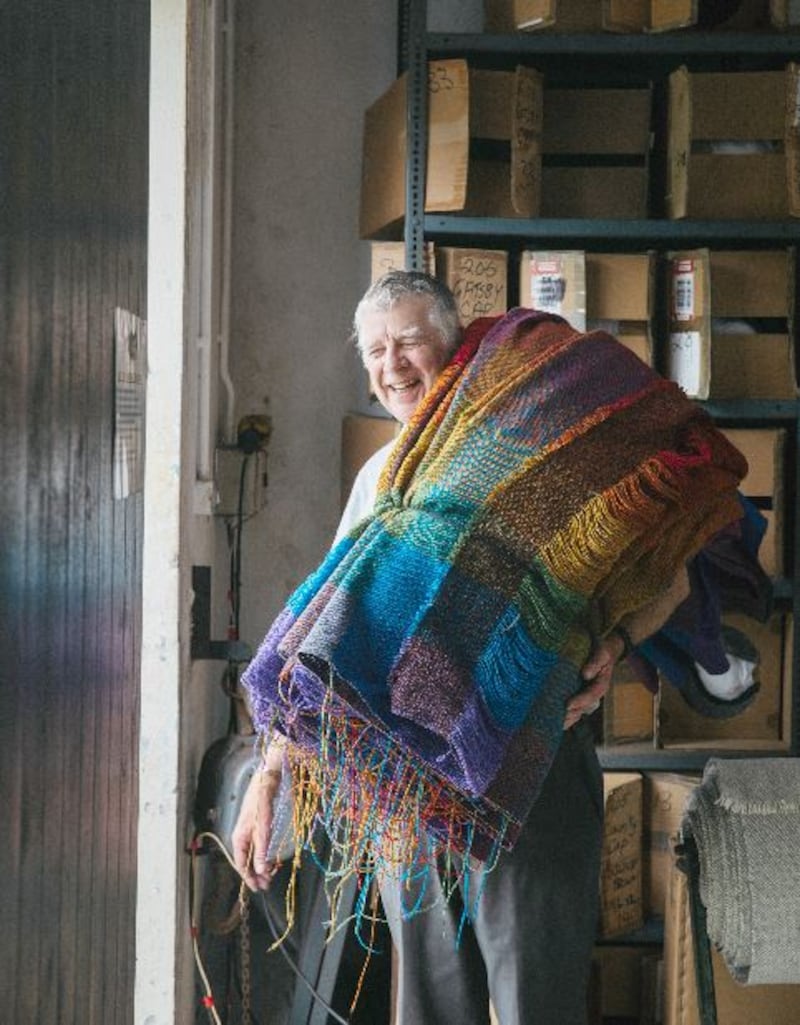
But ultimately the future of this business, alongside the future of hand weaving and yarn spinning in this area of Donegal, depends on us as consumers being prepared to pay a reasonable price for clothing and fabric that is manufactured and produced in Ireland, using a mix of Irish and foreign wool. Currently the company sells about 65 per cent of its produce within Ireland, while the rest goes to buyers in Japan, Denmark, Germany, Taiwan, etc, but ultimately Donaghy would like to be able to sell everything he produces to people who actually visit the mill and get to witness in person this ancient skill that has been practised on the island in some form from at least 1600BC, if not well before that. Next time you're at the Slieve League cliffs be sure to drop in.









